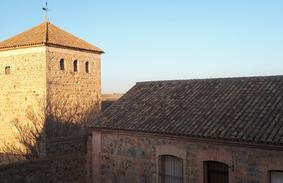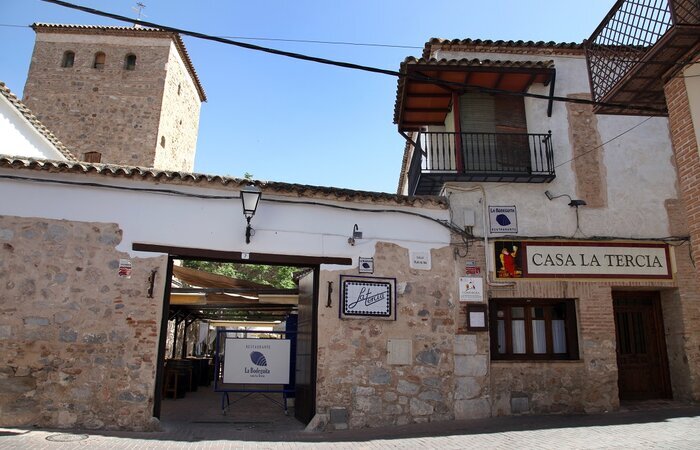Curiosities

The name Tercia is due to a very common tax (at the time) that consisted in the payment of the third part of the harvest, in origin this part corresponded to the clergy. But with the necessity (increasingly urgent) of the royal treasury of new income, these finally were collected and managed by royal officials.
MONUMENTS
Palace prioral Casa la Tercia
This building is one of the most important historical points (with the square and the castle) in Consuegra. From the old palace, only the tower, that served as an archive and entrance, is preserved today. Inside the patio, you can observe columns and roman statues that are still in very good condition.
The loss of the defensive worth of the fortress and the clear discomfort that life in a medieval castle must have meant, led the San Juan authorities to build a more comfortable building that was located in a good location, the town centre, from which to exercise administration and control.
This palace, which we can date to the middle of the 16th century, occupies practically two blocks, with: silos, wine cellars (located in caves), accountancy and payment, prison and archive in the tower, parade ground, and church. It was built on top of the Roman city's old thermal baths, which is where, the remains from this period can be seen today.

Later, a church was added to the complex, of which the apse is still preserved. This apse represents the only remains of the original mosque in the town (later transformed into a church). Despite the transfer of the administrative and fiscal offices to the town centre of Consuegra, the castle still maintained its military value, but it gradually lost its symbolic meaning and was emptied of its content. In this way, the new centre of power formed the most important administrative area in the heart of the city. In the nineteenth century, the "Cristo de la Vera Cruz" school was built on the remnants of the old palace, in the Castilian Mudéjar style.